Tips for Running & Choosing the Perfect Canine Partner
Running with your dog is awesome! Most of us know that exercise extends both our lifespan and our quality of life, and exercise has the same benefit for your pet.
Moreover, an eager dog is great motivation to get out and run. These are just two reasons why you should run with your pet at every opportunity. However, just like people, NOT ALL dog breeds are necessarily born runners, and running long distances may not be the best thing for all of them.

What dog breeds are best for running if you’re a runner? What are some ways you can get the most out of running with your dog without putting either of you at risk? Find out by reading on!
Running with Your Dog: Age Considerations
Just like you would never dream of taking your 3 – year-old son along for a 5 mile run, dogs younger than 18 – 20 months should not run long distances. Puppies have under-developed bones, and running could cause them to form incorrectly, leading to a lifetime of discomfort for the both of you.
During your pet’s next vet appointment, ask when the dog will achieve skeletal maturity because the exact age can vary significantly depending on the breed.
Roughly the same thing applies to older dogs, because like older people, they simply have less energy and are more susceptible to injury. But these limitations certainly do not mean that running is off limits for older dogs.
Running with Your Dog: Consider the Health of the Dog
If you run regularly, you no doubt have a good idea about your health and what your limitations are if any. Dogs need to be healthy and physically capable of running TOO. They may want to run, but if they have joint problems such as arthritis caused by hip dysplasia or Patellar luxation, running can be painful.
Since running with your dog is a cardiovascular exercise, your dog’s heart health should also be important to you.
Dogs that are obese may have a harder time of it. Overweight dogs can benefit from more exercise, but you may want to adjust your run accordingly. Again, CHECK WITH YOUR VET.
Running with Your Dog: Preparations
Walking habits have a lot to do with running patterns, so if your dog pulls you during walks, the same thing will probably happen during runs. To prevent this, consider using a short two or three-foot leash that keeps your dog by your side, as opposed to a longer six-foot leash that allows more freedom of movement. There are times and places for both.
Dogs should be capable of walking nicely by your side long before you expect them to be your running mate. A dog that pulls, jerks away at the sight of a squirrel or lunges at runners coming in the opposite direction may not do well.
A great piece of equipment is a padded running belt with an elasticated leash, with storage for a water bottle and a separate pouch for keys, money, phone, etc.
These are all training issues, so if you have a great dog capable of running by your side, a bit of leash training will prepare them for future runs.
Next, continuing in the dogs-are-like-people vein, start slowly. Begin with a ten-minute run every other day, and the next week, add another ten minutes to each jaunt. Thirty minutes is probably a good amount of time for most dogs and their people.
Once you are ‘up and running’ with your dog there is a great new sport you may be interested in called Canicross – Canicross involves running off-road with your dog, tethered together, and is among the fastest-growing sports in the USA and the UK. The events range from fun runs to local, regional, national and world championships. Read more here.
Running with Your Dog: Choose Your Time Wisely
There are two important things to remember here. First, many dogs will run as long as their master runs, whether they are exhausted or not.
Second, and most of us already know this, dogs cannot sweat. Instead, they cool themselves mostly by panting, which is not a very efficient method of heat removal. So, dogs can often overdo it in the heat and hurt themselves.
Therefore, if you live in a warm climate, it is probably best to run either in the morning or the evening when the sun is lower, and there is plenty of shade.
Also, check your dog for signs of heat exhaustion, such as an altered state of consciousness or excessive gasping for breath. If you see these signs, it’s break time.
On hot days, asphalt can be dangerous to your dog as the surface temperature rises quickly. On a typical 86 degree day in the summer, the road can cook your dog’s paws to 135 to 143 degrees.
Your dog’s paws can be susceptible to injury. You’ve no doubt researched and purchased just the perfect pair of shoes for yourself, but paws are all your dog has as you both pound the cement.
Remember that you can cook an egg at 131 degrees. Even the most dedicated canine runners aren’t likely going to enjoy a run that burns their skin. Find running trails that do not heat up, or schedule runs early in the morning as mentioned above.
Water breaks are also important. Unless you want to take along a water bowl, consider teaching your dog to drink from a bottle.
Dog Breeds That Don’t Run Well
Some breeds are simply not cut out to running a marathon let alone a mile or two. Most of these fall into the category of brachycephalic breeds. Their small faces, flattened noses, partially obstructed airways, and smaller nostrils may make running for any distance out of the question.
These breeds such as Pugs, English Bulldogs, Shih Tzu, Boxers, and Boston Terriers would do better on a leisurely stroll.
Breeds that have shorter legs such as Bassett Hounds, Dachshunds, Corgi are not ideally suited to running. They are less likely to be able to keep up the pace especially if you are working on your speed.
Running With Your Dog: Eager Partners
Almost all dogs love to run, and if given a chance will take off at fast past. But, as discussed above, not all dogs have the stamina or endurance to keep up with a human athlete.
Luckily, there are plenty of dog breeds that love to run, and many of these have been used since antiquity to do just that. Sight hounds primarily were bred to be fast runners, and most of the working dog breeds are good athletes also.
Some are excellent long distance runners, and others are exceptional sprinters. You probably have seen sled dogs such as Siberian Huskies running along snow covered paths in the harshest of weathers, or watch a greyhound dash at upwards of 43 mph. Even if you were the fast person on the planet, you would quickly trail behind your greyhound who can outrun you by 15 mph and more.
As mentioned above, once you start running with your dog and if you are a competitive runner you may be interested in the sport of Canicross – here you will meet others with similar interests too and your dog will make lots of new canine friends! Read more about this exciting sport at Canicross – running with your dog.
You may also be interested in the new sport of SwimRun. Recently in Poland, Michal Jablonski completed a 12 km swimrun event with his Labrador Retriever ‘Venus’.
SwimRun is a new sport that involves running, then swimming across a body of water, then running across a piece of land, then swimming again, and so on. But there are no transitions, as in Triathlons.
There is no time to lose, so you run in your wetsuit and swim in your running shoes, as well as carrying a swim float and hand paddles. Find out more here!
According to Runner’s World and World’s Fastest Dogs, there is literally a breed for anyone who needs a running partner.
Even if your dog is not at the top of the list for speed, many make excellent running partners. Don’t limit your search for the perfect dog runner simply by speed because many breeds do better because of their ability to move at a steady pace.
Sprinters of the Canine World
Here are 15 of the fastest dogs on the planet.
These Dogs make great running partners, but unless you plan to run with your dog every day, you will need to provide a place for them to run. (Fenced in Large Yard).
All of these breeds need at least an hour a day of vigorous exercise. Each breed has it’s specialty whether it is a long steady run or a fast run.
Running With Your Dog – Choices
Greyhound
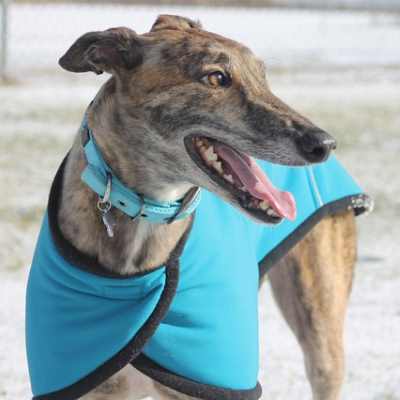
Greyhound; 43mph: Created for speed and short quick runs.
Vizsla

Vizsla, (Hungarian Vizsla) 40 mph: Good for steady and speedy runs.
Afghan Hound

Afghan Hound at 40 mph: Short Fast Run.
Saluki

Saluki at 40 mph: Fast, but short runs.
Jack Russell Terrier
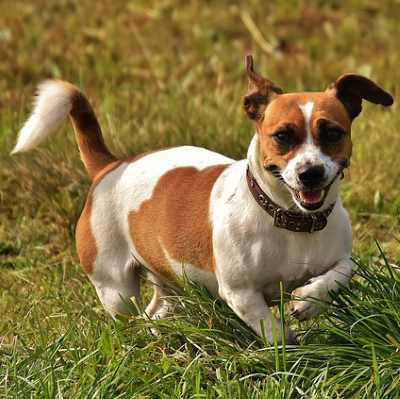
Jack Russell Terriers (Parson Russell Terrier) at 25 mph.: Steady runs, with short legs!
Dalmatian
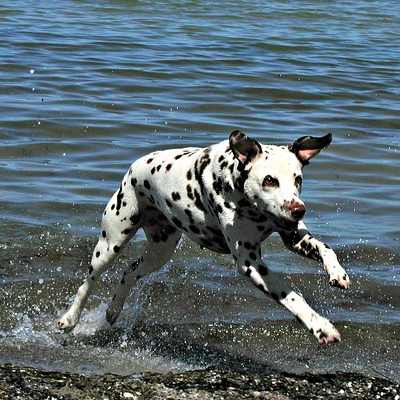
Dalmatian at 35 mph: A powerful sprinter but also has endurance for long steady runs.
Borzoi
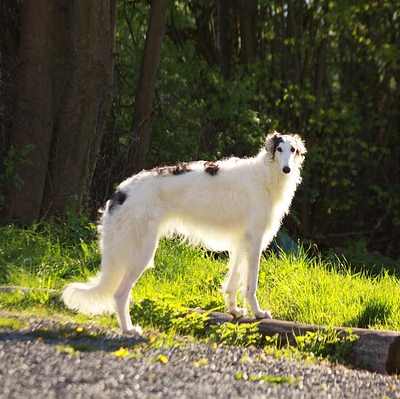
Borzoi can run at 36 mph: Short fast runs.
Weimaraner
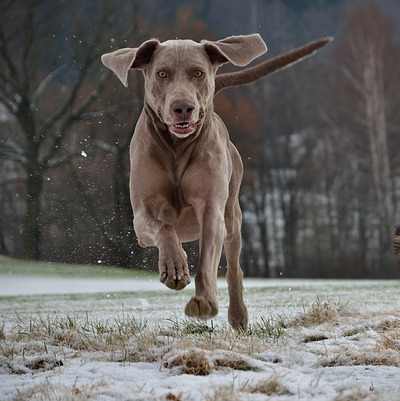
Weimaraner at 35 mph Good for regular and short fast runs.
Scottish Deerhound

Scottish Deerhound at 35 mph: Fast, short runs.
Pharoah Hound

Pharaoh Hound at 35 mph: Do well with short, brisk runs.
Ibizan Hound
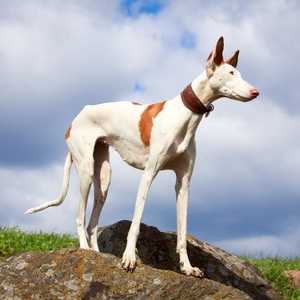
Ibizan Hound at 35 mph: Fast but Short Runs.
Whippet
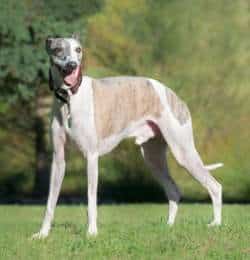
Whippet at 35 mph: World’s fastest couch potato. Fast but short runs.
Doberman Pinscher
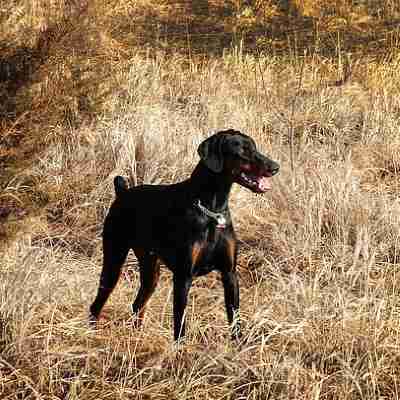
Doberman Pinschers 30 mph: Fast, but short runs.
Border Collie
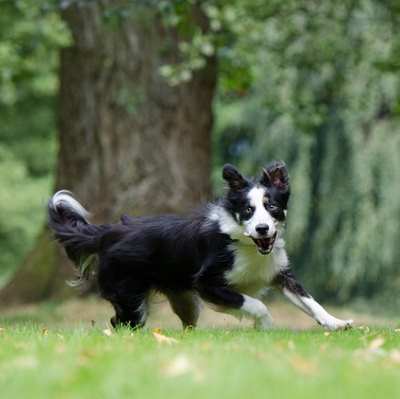
Border Collie at 30 mph: Love trails with some obstacles. Energy to burn.
Alaskan Husky
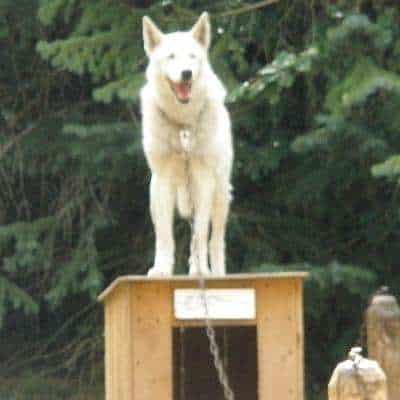
Alaskan Husky at 28 mph: Long distance in cold climates. The preferred breed for CANICROSS participants, due to their endurance.
Rhodesian Ridgeback

Rhodesian Ridgeback – 30mph – fast sprinter, with endurance to run at a steady pace all day. Good in warm weather.
Remember, we recommend using a good activity monitor, such as the FitBark device. It works with your smart phone operating Android 5 or iOS 10 or higher, and provides a wealth of information about your dog’s activity, sleep routines, and general health. It has been used by over 100 universities and research institutions all over the World.
Running With Your Dog
More Breeds That Like to Run
- Pit Bulls (Staffordshire Bull Terrier and American Staffordshire Terrier) Good for medium speed short runs.
- English Pointer: Enough energy to run all day!
- English Setters: Good for Short, medium speed runs
- Retrievers: Labrador and Golden. Long slow runs or short, medium speed runs.
- Standard poodles: Long Steady runs.
- Belgian Malinois: Good with short, steady runs
Breeds for Cool Climates
Running With Your Dog
Your Recovery & Theirs
After the two of you get home, rest and recovery are in order.
Many people need to be concerned about joint health. The best ice packs for knees stay cold for at least twenty minutes because that’s how long it takes to get the benefits of icing.
Joint health is even more important for dogs because most of their weight is on the balls of their feet. Two or three minutes with an ice pack on each leg may be enough for most dogs.
Keep these basic tips in mind, and have fun out there!
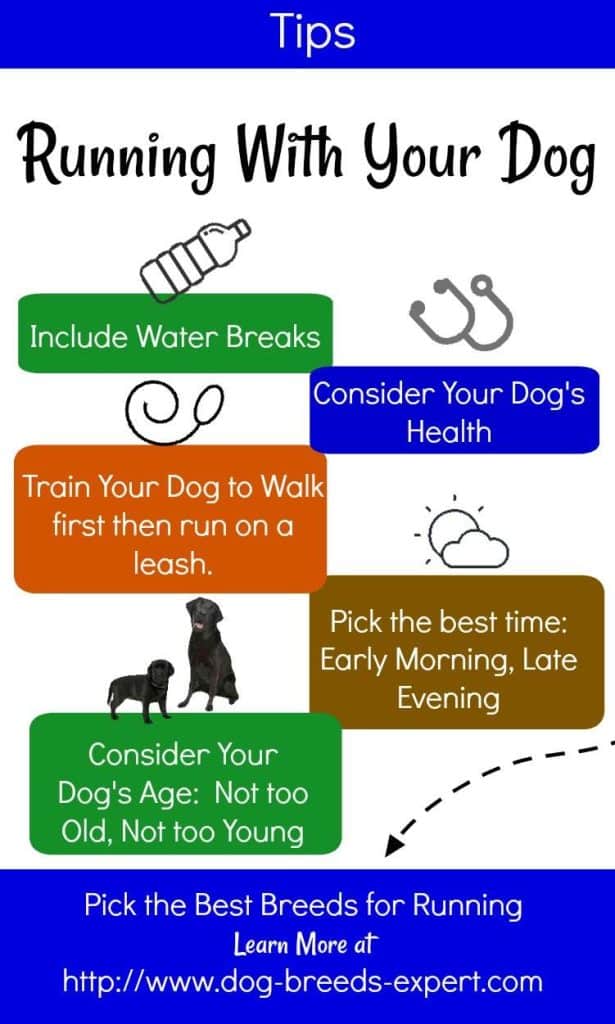
Author Bio
Jessica Hegg is the content manager at ViveHealth.com. Interested in all things related to living a healthy lifestyle she works to share valuable information aimed at overcoming obstacles and improving the quality of life for others.



![Why Do Dogs Scratch On Leather Car Seats? [Do These 5 Things]](https://www.dog-breeds-expert.com/wp-content/uploads/2022/09/When-To-Stop-Giving-Puppy-Treats-For-Potty-Training-2.webp)